Intro to JupyterHubs
In this tutorial, you will get an overview of our JupyterHub.
Log into the JupyterHub
Go to https://nmfs-openscapes.2i2c.cloud/. Click “Login to continue”. You will be asked to log in with your GitHub Account, if you are not logged in already.
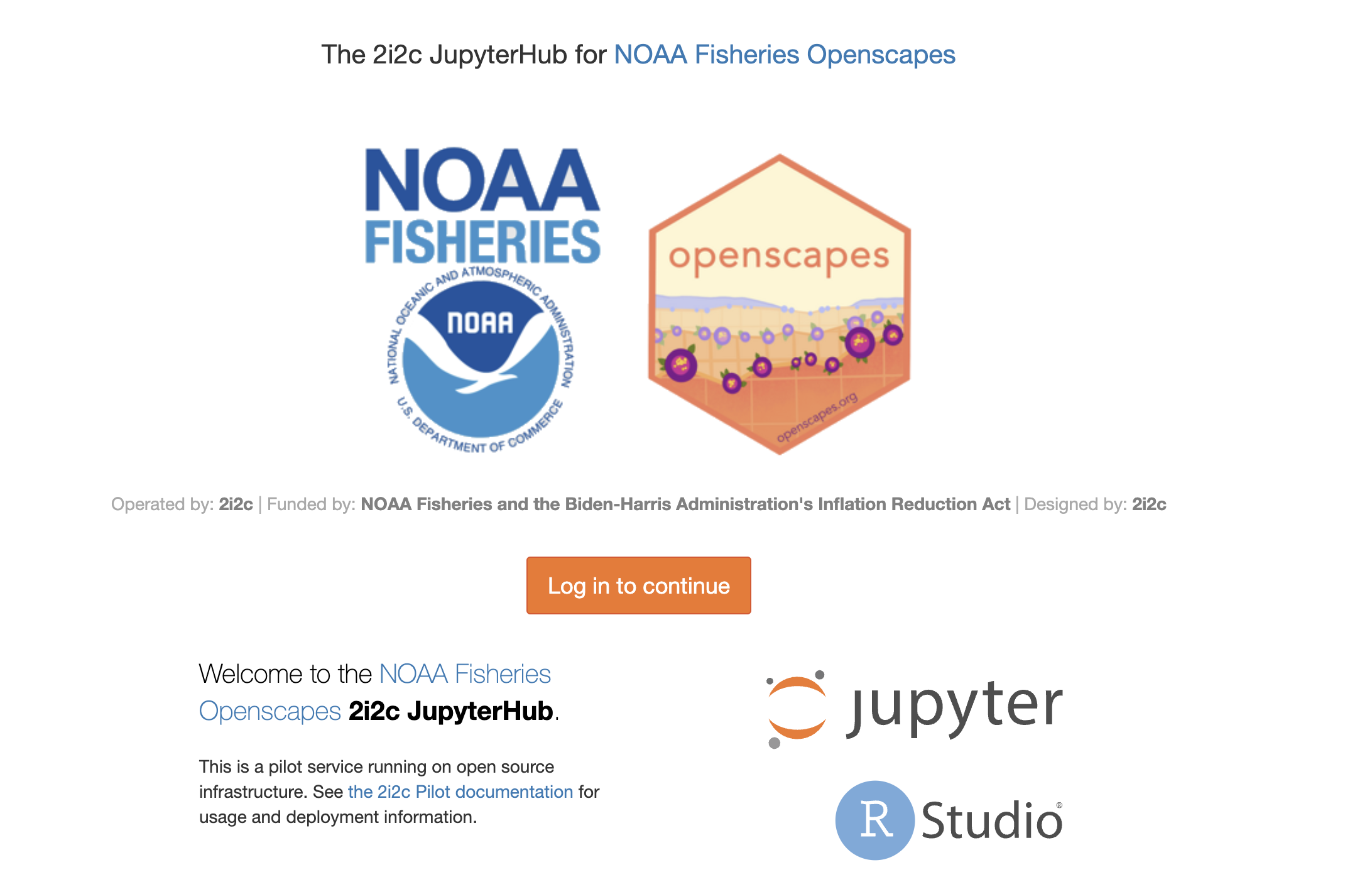
Image type: Python or R
Next you select your image type from the drop-down. The default is a geospatial image with Python and R.
Virtual Machine size
You’ll see a dropdown that allows you to choose the size of virtual machine. For the tutorials, you will only need the smallest virtual machine. Please only choose the large machines if you run out of RAM as the larger machines cost us more.
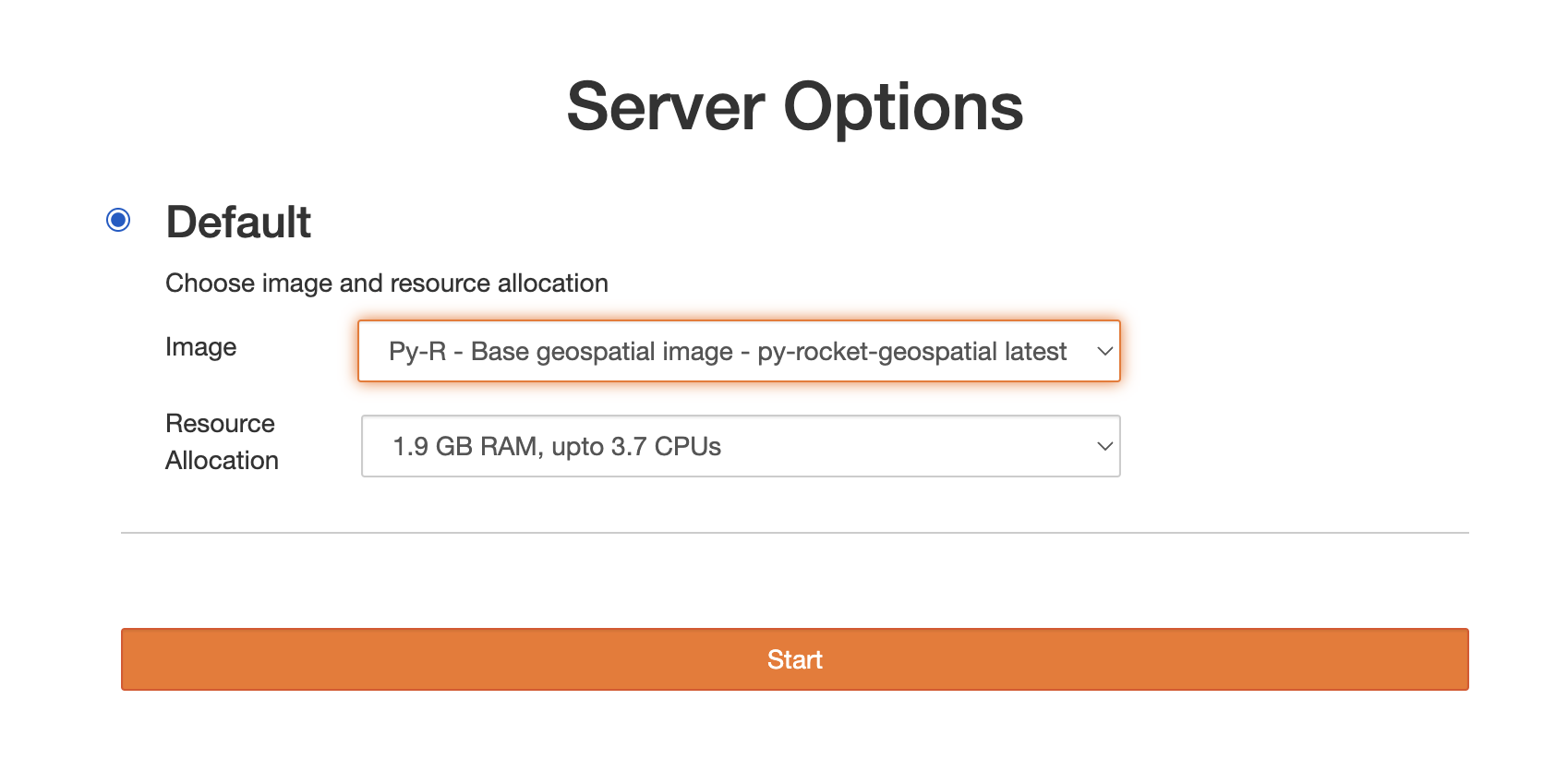
Start up
After we select our server type and click on start, JupyterHub will allocate our virtual machine. This may take several minutes.
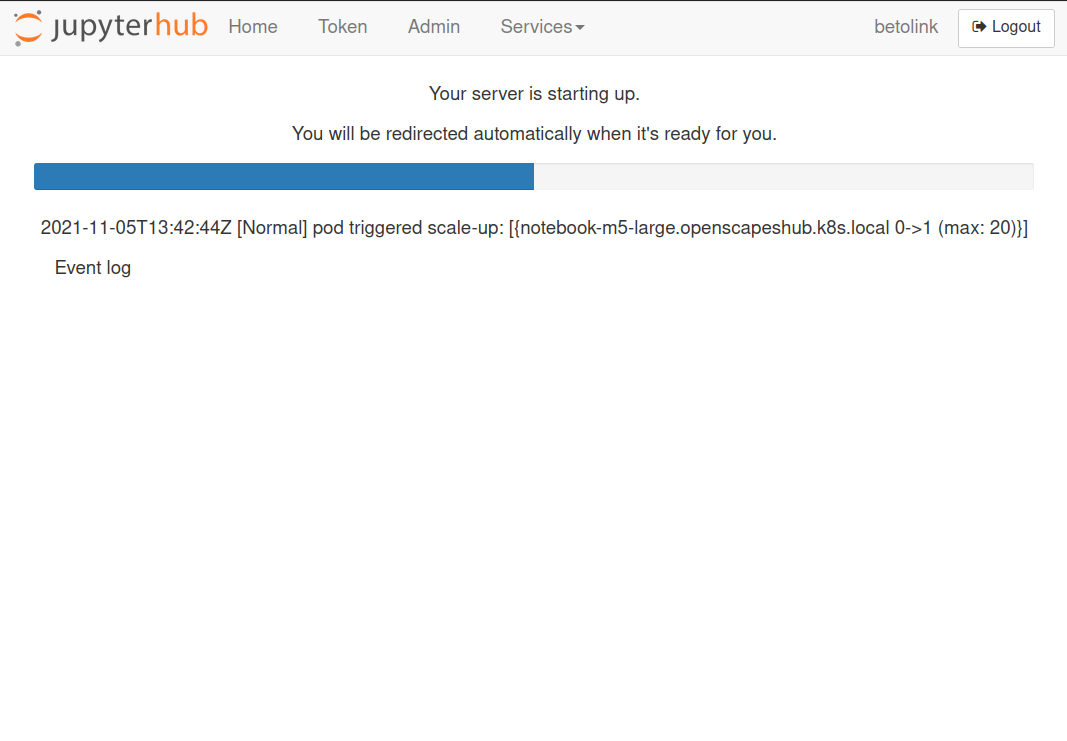
The Launcher
When you are in the JupyterLab tab (note the Jupyter Logo), you will see a Launcher page. If you don’t see this, go to File > New Launcher or click the blue button on the top left. From the Launcher, you will see a buttons to open a new Jupyter Notebook, RStudio, Desktop and VSCode on the top row and buttons to open a Terminal and other file types below.
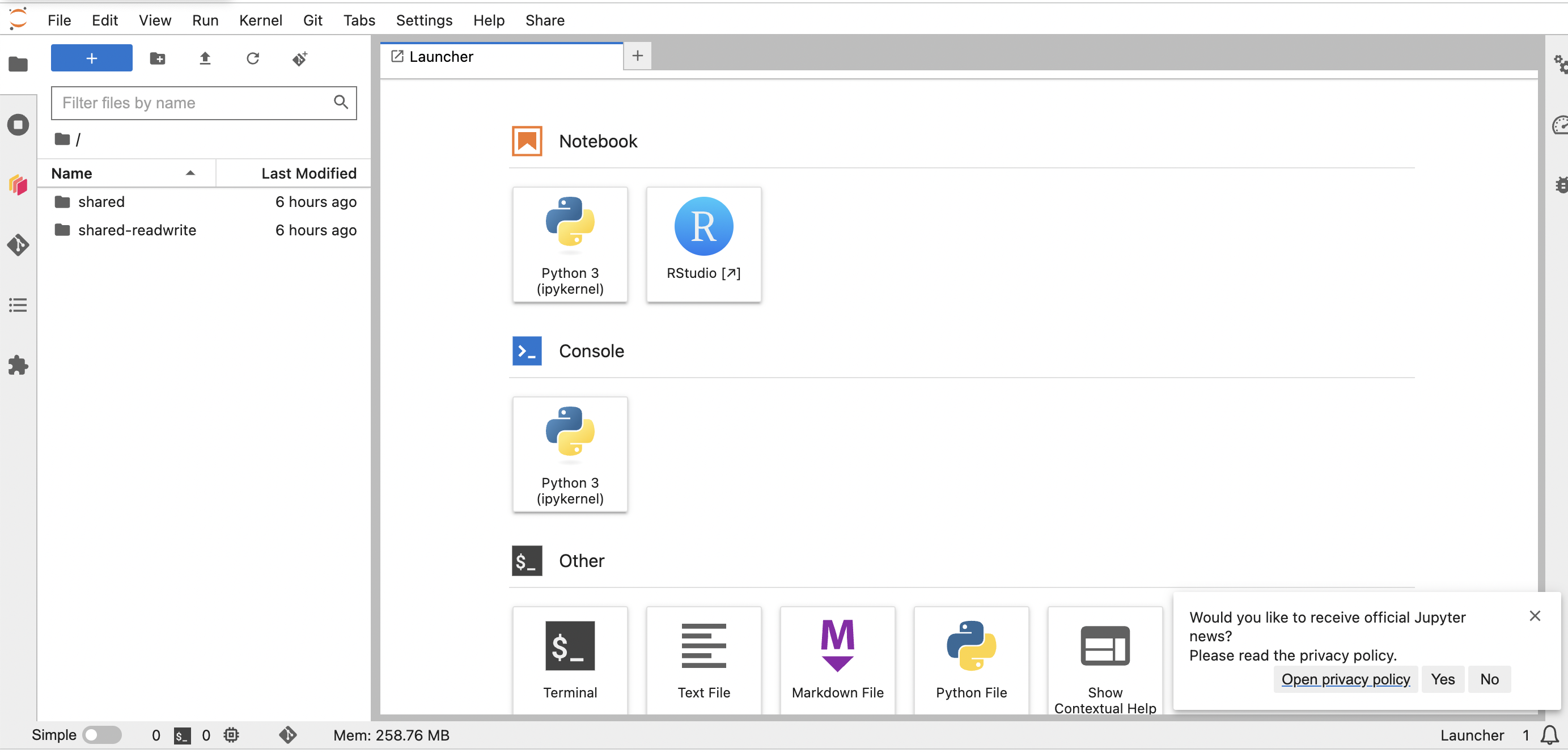 Clicking on the “Python 3”, Terminal, Text File and Markdown File buttons will open a new tab in JupyterLab. You can also use the File dropdown menu for these.
Clicking on the “Python 3”, Terminal, Text File and Markdown File buttons will open a new tab in JupyterLab. You can also use the File dropdown menu for these.
To get an overview of JupyterLab, go here: Intro to JupyterLab
RStudio
If you click the RStudio button in Launcher, RStudio will open in a new browser tab.
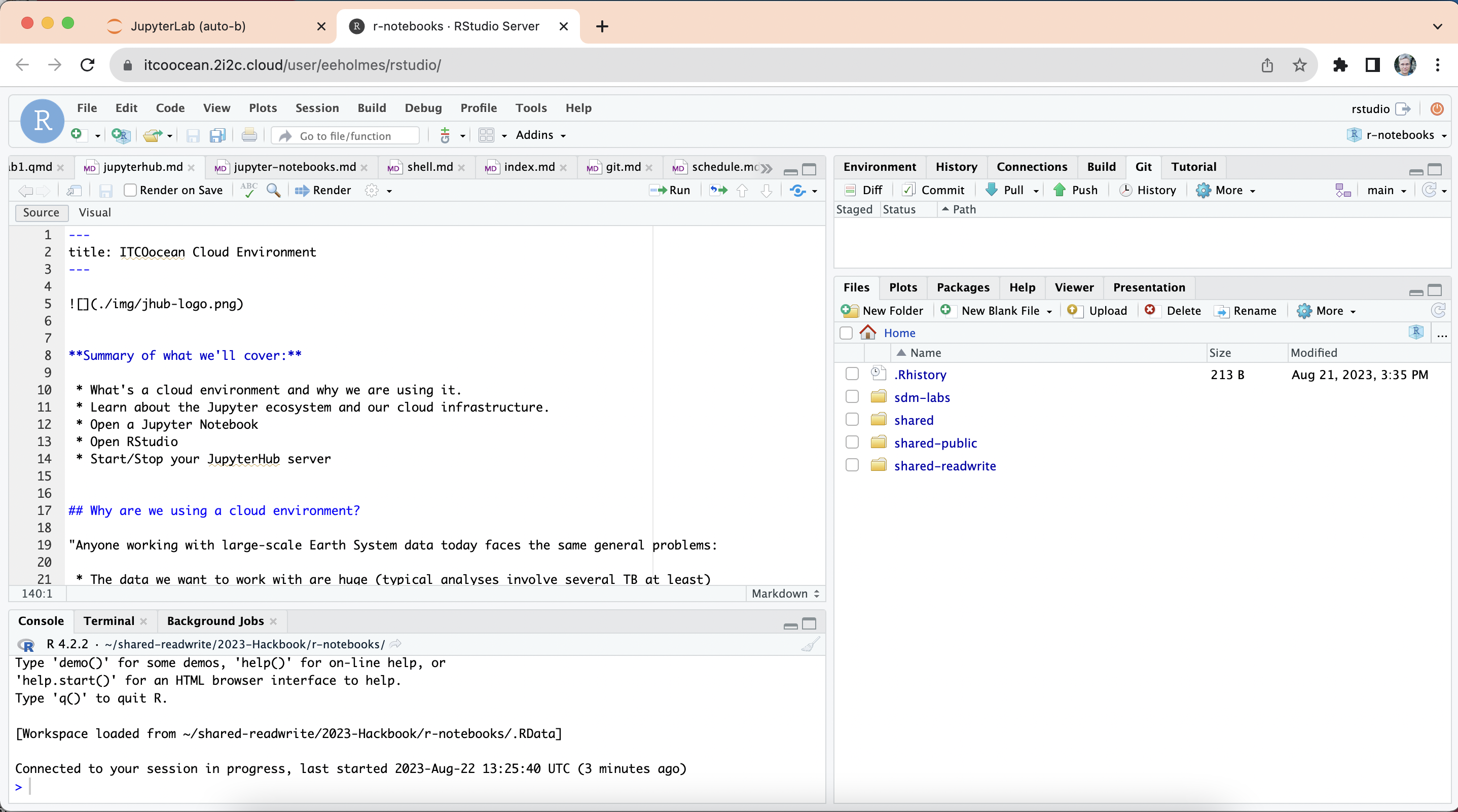
To get an overview of RStudio, go here: Intro to RStudio
End your session
When you are finished working for the day you should log out of the JupyterHub, although it will log you out automatically after 90 minutes. You will not lose work; your home directory is persistent. When you keep a session active it uses up AWS resources (costs money) because it keeps a series of virtual machines deployed.
You log out from the JupyterLab tab not the RStudio tab.
From the JupyterLab browser tab, do one of two things to stop the server:
- Log out File -> Log Out and click “Log Out”!
- or File -> Hub Control Panel -> Stop My Server
Can’t find the JupyterLab tab? Go to https://nmfs-openscapes.2i2c.cloud/hub/home
Logging out or stopping your server will NOT cause any of your work to be lost or deleted. It simply shuts down some resources. It would be equivalent to turning off your desktop computer at the end of the day.
Restart your server
Sometimes the server will crash/stop. This can happen if too many people use a lot of memory all at once. If that happens, go to the JupyterLab tab and then File -> Hub Control Panel -> Stop My Server and then Start My Server. You shouldn’t lose your work unless you were uploading a file.
Your files
When you start your server, you will have access to your own virtual drive space. No other users will be able to see or access your files. You can upload files to your virtual drive space and save files here. You can create folders to organize your files. You personal directory is home/jovyan. Everyone has the same home directory but your files are separate and cannot be seen by others.
Getting help
- Discussions https://github.com/nmfs-opensci/NOAAHackDays/discussions
- Add an issue if you see something amiss or you would like a package added https://github.com/nmfs-opensci/NOAAHackDays/issues
- Visit the NMFS Open Science Google Space (NOAA only). Search Google Spaces to find.
- NMFS staff: The NMFS Python User Group and NMFS R User Group are great places to get help from fellow users for Python and R questions.
FAQ
Why do we have the same home directory as /home/jovyan? /home/jovyan is the default home directory for ‘Jupyter’ based images/dockers. It is the historic home directory for Jupyter deployments.
Can other users see the files in my /home/jovyan folder? No, other users can not see your files.
Acknowledgements
Some sections of this document have been taken from hackweeks organized by the University of Washington eScience Institute, CryoCloud and Openscapes.

